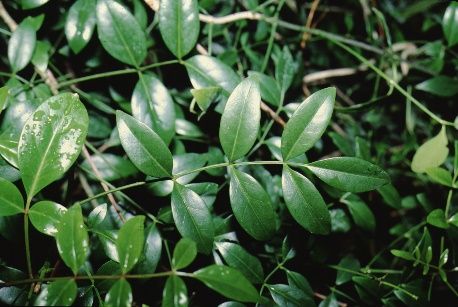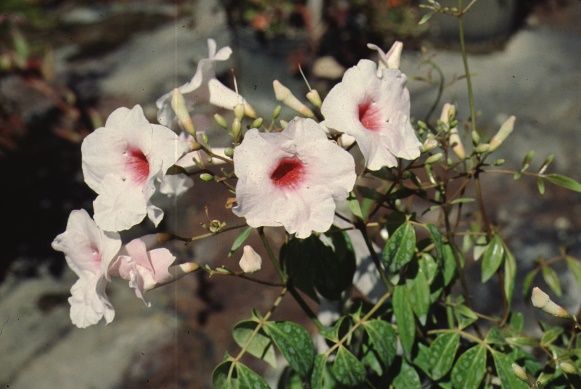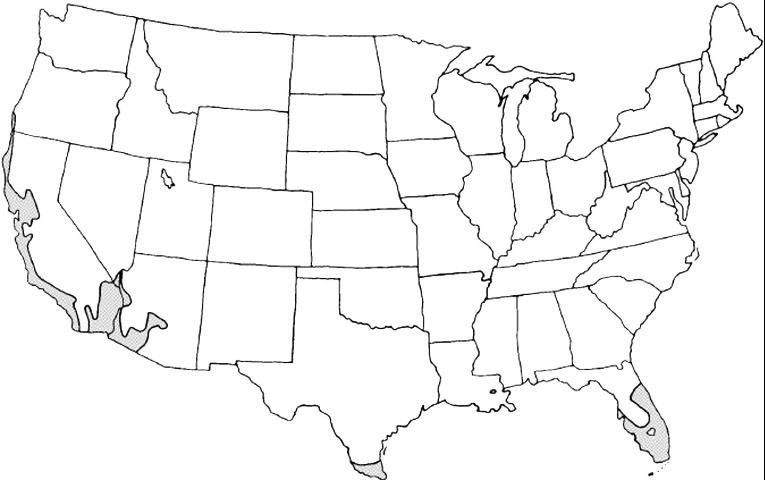Introduction
Rapidly growing bower plant has slender, twining stems, glossy dark green foliage, and 2-inch-wide, white, pink-throated flowers which appear in summer, fall, and winter. Peak flower production occurs in mid-summer. Bower plant is evergreen and can be used to cover fences, arbors, and other structures. It can cover a 15-foot-tall arbor in one or two growing seasons. It does not grow to be a particularly dense vine; instead, it maintains an open, fine-textured effect.

Credit: Edward F. Gilman, UF/IFAS

Credit: Edward F. Gilman, UF/IFAS

Credit: Edward F. Gilman, UF/IFAS
General Information
Scientific name: Pandorea jasminoides
Pronunciation: pan-DOR-ree-uh jaz-min-NOY-deez
Common name(s): bower plant, bower vine
Family: Bignoniaceae
Plant type: vine
USDA hardiness zones: 9B through 11 (Figure 4)
Planting month for zone 9: year-round
Planting month for zone 10 and 11: year-round
Origin: not native to North America
Invasive potential: not known to be invasive
Uses: espalier
Availability: somewhat available, may have to go out of the region to find the plant

Credit:
Description
Height: depends upon supporting structure
Spread: depends upon supporting structure
Plant habit: spreading
Plant density: dense
Growth rate: fast
Texture: fine
Foliage
Leaf arrangement: opposite/subopposite
Leaf type: odd-pinnately compound
Leaf margin: undulate
Leaf shape: ovate
Leaf venation: pinnate
Leaf type and persistence: evergreen
Leaf blade length: 2 to 4 inches
Leaf color: green
Fall color: no fall color change
Fall characteristic: not showy
Flower
Flower color: pink
Flower characteristic: flowers periodically throughout the year
Fruit
Fruit shape: elongated
Fruit length: 1 to 3 inches
Fruit cover: dry or hard
Fruit color: brown
Fruit characteristic: inconspicuous and not showy
Trunk and Branches
Trunk/bark/branches: usually with one stem/trunk
Current year stem/twig color: brown
Current year stem/twig thickness: medium
Culture
Light requirement: plant grows in part shade/part sun
Soil tolerances: slightly alkaline; clay; sand; acidic; loam
Drought tolerance: moderate
Soil salt tolerances: poor
Plant spacing: 36 to 60 inches
Other
Roots: not applicable
Winter interest: no special winter interest
Outstanding plant: not particularly outstanding
Pest resistance: no serious pests are normally seen on the plant
Use and Management
Bower plant requires full sun and fertile, rich soil with ample moisture. Protection from strong winds is recommended. The plant can be successfully grown in the warmest parts of hardiness zone 9 in many years. Flowers are quickly produced from young plants which are damaged from a light freeze.
The cultivar 'Alba' has white-lipped flowers; 'Purpurea' produces pink-lipped flowers; and 'Rosea' has pink flowers with rose pink throats.
Propagation is by seed or softwood cuttings.
Pests and Diseases
No pests or diseases are of major concern.